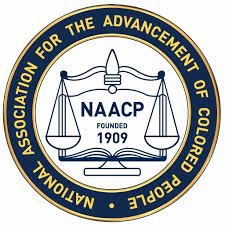
NAACP Founders Day

Founded by 3 Whites
First meeting had 53 Whites and 7 Blacks
Source: U.S. Library of Congress https://www.loc.gov/exhibits/naacp/founding-and-early-years.html
| President Abraham
Lincoln
Born: February 12, 1809 Died: April 15, 1865 NAACP was founded on the 100th anniversary of Presdient Lincoln's birthday. |
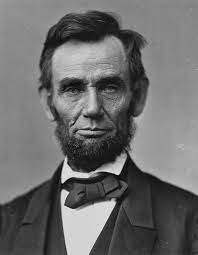 |
William English Walling, a NAACP FounderWilliam English Walling (1877–1936), a prominent socialist and journalist, was descended from wealthy Kentucky slaveholders. He was a founder of the Intercollegiate Socialist Society, the Women’s Trade Union League, the Social Democratic League, and the NAACP. In 1908 Walling and his wife, Anna Strunsky, a revolutionary Russian Jew, traveled to Springfield, Illinois, to investigate the race riot. In his article, The Race War in the North, which appeared in the September 3 Independent, Walling declared: “the spirit of the abolitionists, of Lincoln and Lovejoy, must be revived and we must come to treat the negro on a plane of absolute political and social equality,” and he appealed for a “large and powerful body of citizens to come to their aid.” The article aroused the conscience of Mary White Ovington, a New York social worker, who wrote a letter to Walling offering her support. |
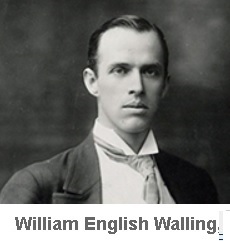 |
NAACP Founder Mary White OvingtonMary White Ovington (1865–1951), a social worker and freelance writer, was a principal NAACP founder and officer for almost forty years. Born in Brooklyn, New York, into a wealthy abolitionist family, she became a socialist while a student at Radcliffe College. From 1895 to 1903, she led the Greenpoint Settlement in Brooklyn, New York, which served the underprivileged. Ovington befriended W.E.B. Du Bois in 1904, when she was researching her first book, Half a Man (1911), about black Manhattan. In 1906 she covered the Niagara Movement and the Atlanta riot for the New York Evening Post. Ovington played a crucial role in the NAACP’s evolution and stability. She recruited women into the ranks, mediated disputes, and guided the transition to black leadership. During her tenure she served as secretary (1911–1912), acting secretary, treasurer, and board chairman. |
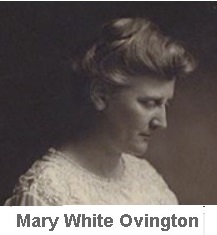 |
Social Worker and Civic Leader Henry MoskowitzHenry Moskowitz (1879–1936), a Romanian Jewish émigré, attended the University Settlement’s boys’ club as a youth. There he met fellow socialist William English Walling, with whom he traveled to Eastern Europe in 1905 to study social and economic conditions. Moskowitz was active in the Ethical Culture Society as an associate leader, and from 1913 to 1917 he served as chairman of several New York commissions. A close associate of Governor Alfred E. Smith, he coauthored Smith’s biography. Moskowitz’s involvement in the NAACP was indicative of early Jewish support; Lillian Wald, Rabbi Emil G. Hirsh, and Rabbi Stephen S. Wise were also founders. The Spingarn brothers served as officers, and Jacob Schiff, Julius Rosenwald, and Herbert Lehman contributed funds. |
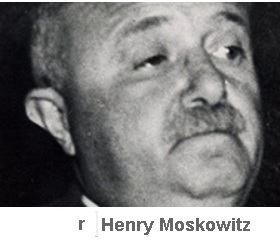 |
NAACP Leader Oswald Garrison VillardOswald Garrison Villard (1872–1949), publisher of the New York Evening Post and The Nation, was the son of railroad tycoon Henry Villard and grandson of abolitionist William Lloyd Garrison. He used his fortune to promote liberal causes, including women’s suffrage, anti-imperialism, and Negro uplift. Villard originally supported Booker T. Washington, believing education was the solution to the “Negro problem,” but the Brownsville affair and Atlanta riot convinced him of the need for a more militant strategy. The “Committee for the Advancement of the Negro Race” (1906) he envisioned became the blueprint for the NAACP. Villard funded the NAACP’s budget and provided free office space in the Evening Post building. He resigned as NAACP chairman in 1914 due to irreconcilable differences with W. E. B. Du Bois, but remained a board member until his death in 1949. |
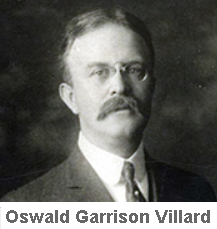 |
NAACP Founder Charles Edward RussellCharles Edward Russell (1860–1941) was a prominent writer and Socialist Party leader. The author of twenty-seven books, he won the Pulitzer Prize for The American Orchestra and Theodore Thomas (1927). Born in Davenport, Iowa, the son of an abolitionist newspaper editor, Russell began his career as a reporter. After twenty years in the field, he won renown as a muckraker and politician. He wrote several exposés, including The Greatest Trust in the World (1905), about the Chicago beef trust. He also campaigned for governor, mayor, and senator in New York but never won. A close friend of William English Walling, Russell was among the original group of people Walling invited to plan the NAACP. He served as acting chairman of the National Negro Committee (1909) and as a board member. |
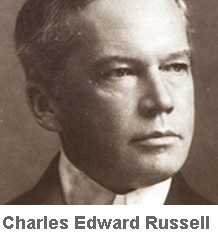 |
NAACP leader Bishop Alexander WaltersAlexander Walters (1858–1917), emerged from slavery to become a bishop of the African Methodist Episcopal Zion Church and a civil rights leader. In 1898 Walters and T. Thomas Fortune cofounded the Afro-American Council (1898–1908), the largest national civil rights organization at the time. As president, Walters opposed Plessy v. Ferguson, lynching, and Booker T. Washington’s accommodationism. A conflict with Fortune, a Washington ally, led to his removal in 1902. He was later reelected and served from1905 until1907. In 1908, he joined the Niagara Movement. Walters was among the seven African American signers of the “Call” for a national conference to address racial inequality. The others were William Bulkley, a school principal, W. E .B. Du Bois, Reverend Francis Grimke, Mary Church Terrell, Reverend J. Milton Waldron, and Ida B. Wells-Barnett. In addition, Walters served as NAACP vice president (1911) and was a board member. |
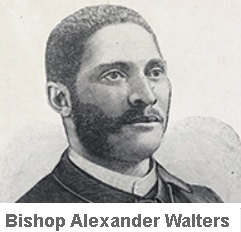 |
Social Worker Florence KelleyFlorence Kelley (1859–1932), a social worker and attorney, was born in Philadelphia, the daughter of Congressman William D. Kelley, an abolitionist and founder of the Republican Party. In 1891 Kelley joined Hull House, where she befriended Jane Addams and William English Walling. In 1893 Governor John Altgeld appointed her Illinois’s first chief factory inspector. She moved to New York to become General Secretary (1899–1932) of the National Consumers’ League. Kelley fought for the rights of working women and children. She campaigned for an eight-hour workday, a minimum wage, and federal aid for mothers and infants. With Lillian Wald, she helped create the U.S. Children’s Bureau (1912). Walling enlisted her help to create the NAACP. She served as a longtime member of the board and Legal Committee. |
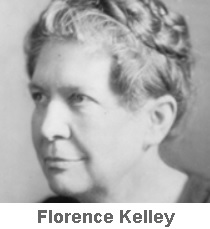 |
Pioneer Nurse Lillian WaldLillian Wald (1867–1940), a pioneer nurse, was born into a wealthy German-Jewish family. In 1895 Wald and Mary Brewster, a fellow graduate of the New York Hospital Training School for Nurses, opened the Henry Street Settlement on the city’s Lower East Side with the support of banker Jacob Schiff. The settlement provided a visiting nurses service and social services to that poor immigrant quarter. From this base, Wald founded public health nursing in the U.S. She introduced public school nurses and the Red Cross Town and Country Nursing Service. Wald also cofounded Lincoln House to extend health care to black New Yorkers and joined her Henry Street colleagues Florence Kelley and Henry Moskowitz in founding the NAACP. |
 |
Moorfield StoreyMoorfield Storey (1845–1929), a prominent constitutional lawyer and past president of the American Bar Association, became the NAACP’s first president (1910–1929). He was descended from the New England Puritans and Harvard trained. A steadfast champion of the oppressed, he also served as secretary to abolitionist Senator Charles Sumner; led the Anti-Imperialist League, which opposed U.S. ownership of the Philippines; and defended the rights of Native Americans and immigrants. Storey prosecuted the NAACP’s early Supreme Court victories. He was later aided by Louis Marshall (1856-1929), another renowned constitutional lawyer and Jewish communal leader.
|
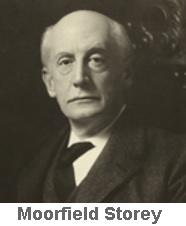 |
NAACP Leader Joel SpingarnThe favorable publicity generated by the Pink Franklin case, in which the NAACP defended a black sharecropper accused of murder, attracted new supporters to the NAACP. Among them was the independently wealthy Joel Spingarn (1875-1939), chairman of Comparative Literature at Columbia University. Spingarn, the eldest son of an Austrian Jewish tobacco merchant, had a profound sense of social responsibility and abhorred racial violence. Intent on reform, he made an unsuccessful bid for Congress on the Republican ticket in 1908 and served as a delegate at the national conventions of the Progressive Party in 1912 and 1916. Spingarn resigned his professorship in 1911 to devote his energy and talents to the NAACP. He was successively elected as Executive Committee member, chairman of the board, treasurer, and finally president between 1930 and 1939. Joel Spingarn was the originator of the Spingarn Medal, awarded annually by the NAACP since 1915 for the highest achievement by an African American. |
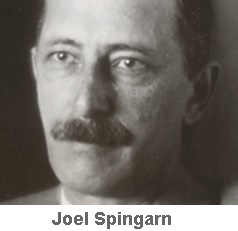 |
NAACP Leader Arthur SpingarnIn January 1911 the NAACP organized its first branch in Harlem, New York with the help of Joel Spingarn, who persuaded his brother, Arthur (1878–1971) and Charles H. Studin, Arthur’s law partner, to join him. The branch established a vigilance committee, which became the National Legal Committee, to deal “with injustice in the courts as it affects the Negro.” Arthur worked pro bono because the NAACP could not afford to hire attorneys on a regular basis and was often able to convince other prominent attorneys to volunteer their services. Arthur served as the chairman of the National Legal Committee until 1939 and as NAACP president from 1939 to 1966. The members of the Legal Committee also included Clarence Darrow, Felix Frankfurter, and Charles Houston. |
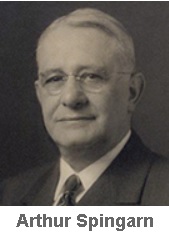 |
John R. ShilladyIn 1918 the NAACP hired John Shillady, a social agency administrator, as Secretary (1918–1920). He immediately directed a successful membership drive, and then focused on the anti-lynching campaign. Texas, with 31 branches, was the NAACP’s stronghold in the South. Fearing black reprisals after the Longview race riot of 1919, the Texas attorney general subpoenaed the Austin branch’s records in a move designed to shut down NAACP branches statewide. When Shillady traveled to Austin to meet with state officials he was severely beaten by a mob led by a county judge and constable. The assault left the once robust, cheery Irishman infirm and traumatized. Shillady resigned in 1920 and died shortly thereafter. |
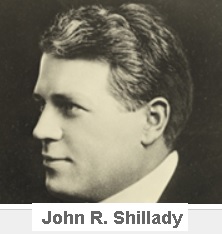 |
The Amenia Conference, 1916This photograph shows some of the men and women who attended the Amenia Conference in 1916. Included are NAACP activists Addie Hunton, Mary Church Terrell, Mary Talbert (Second row, left to right: 1st, 3rd, and 4th), Arthur Spingarn, William Pickens, and Charles W. Chesnutt (First row, left to right: 1st, 2nd, and 4th). Among the other conferees were Booker T. Washington allies Henry Hunt, Emmet J. Scott, Fred Moore, J. Rosamond Johnson, and James Weldon Johnson; Niagarites Charles E. Bentley, L.M. Hershaw, and Mason Hawkins; and educators Kelly Miller and Lucy Laney (Second row, left to right: 5th and 7th). |
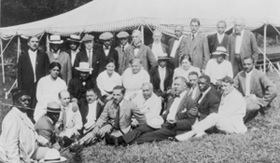 |